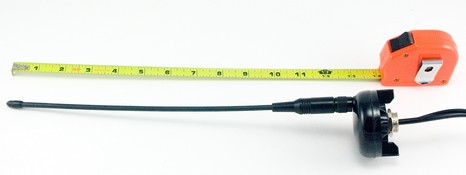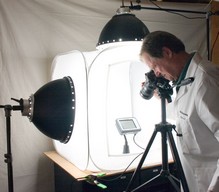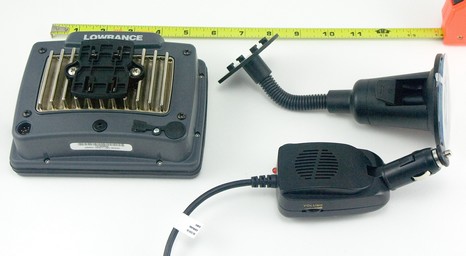Gadget sizes, the eye can fail

So I rarely discuss dimensions and weights when I write up electronics, figuring that it’s fairly obvious, or at least easy enough to find on the manufacturer’s Web site. But the latter is not always true, and some products just don’t look their true size, even when pictured with a little context. For instance, when I first saw a photo of Y-Tronic’s dual antenna AIS accessory, my eye failed to see how petite it actually is, even though the plugs are familiar. (And I still don’t understand how it mounts on a rail, though I’ve got the question in). Nor did I get how chunky the Lowrance iWay 600c is from its first photo. I’ve come to like the thing quite a bit, but shoppers should know that it weighs about 2.6 pounds with the accessories below (bigger here), and the AC brick is a whopping 1.6 pounds more. The weights are not given at Lowrance.com (that I can find), but the manual does wisely recommend resting the unit on a dashboard so that the suction mount doesn’t take the whole strain. By the way, I’m quite enjoying my new photo set up, above, but an explanation of the lab coat will have to wait a while!
is not always true, and some products just don’t look their true size, even when pictured with a little context. For instance, when I first saw a photo of Y-Tronic’s dual antenna AIS accessory, my eye failed to see how petite it actually is, even though the plugs are familiar. (And I still don’t understand how it mounts on a rail, though I’ve got the question in). Nor did I get how chunky the Lowrance iWay 600c is from its first photo. I’ve come to like the thing quite a bit, but shoppers should know that it weighs about 2.6 pounds with the accessories below (bigger here), and the AC brick is a whopping 1.6 pounds more. The weights are not given at Lowrance.com (that I can find), but the manual does wisely recommend resting the unit on a dashboard so that the suction mount doesn’t take the whole strain. By the way, I’m quite enjoying my new photo set up, above, but an explanation of the lab coat will have to wait a while!















The lab coat gives you that all-important credibility mojo. Without the lab coat, you’re just some guy writing about electronics. With it, suddenly you’re conducting “clinical studies”. 🙂
Dilemma: One mast, one masthead vhf antenna; Where do I mount the AIS antenna if I want the best advance warning? I suppose the Class A antennae are more than 100′ above the water, and the class B’s are only 2 watts, so they are probably not going to be readable more than what, 5 miles? Somebody think this through for me!
Sandy:
This is a perennial problem and not easy to solve. I’m not even sure how I’m going to solve it on my sailing cat yet. It’s a choice of installing an arch on the stern and putting it on that, or just clamping it to the pushpit rail. I did toy with putting it up on one of the spreaders for a while, but decided that was too complicated. I didn’t ant to put it on the mast as I want an independent system – if (in extremis) I lose the mast in heavy weather, I still want some other means of communication.
As to the range of Class B, see my other comments in various topics for details, but 5nm is usually enough for me – the exception possibly being the fast cats that do the Poole – Cherbourg run in the summer at 40knots – that would only give them only 7 minutes or so to see me.
Kato is a good bet in Annapolis for an arch. http://www.katomarine.com
Wells is also a good choice, but futher away.
http://www.wellsmarine.com
I have an 8′ antenna pole with two arms (with 5 mounts total) on the starboard stern of my sailboat and someday when I have infinite time will add AIS and WiFi antennas. The AIS antenna can act as a backup VHF antenna if needed. The pole also has a swingable engine lift / MOB arm.
hmmm… now let me see, Annapolis (USA) to Poole (UK)… must be over 2000nm… bit far for me!!!!
Just another thought – I’m considering putting a set of davits on the back for the inflatable (yes, sigh, I know I should really de-flate it and stow it away, but it’s such a pain to go through all that, and the new dinghy doesn’t roll up as neatly as the old one…), so I was wondering if the AIS / reserve antenna (good point, that!) could be bolted onto one of them?